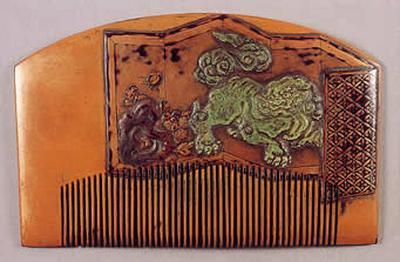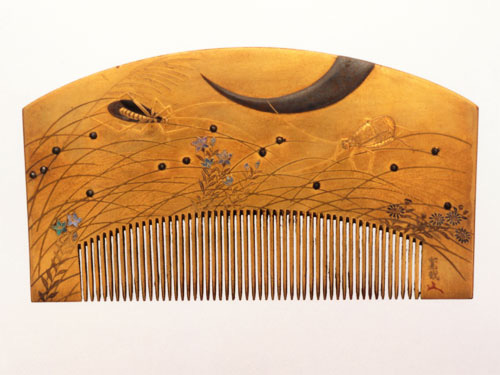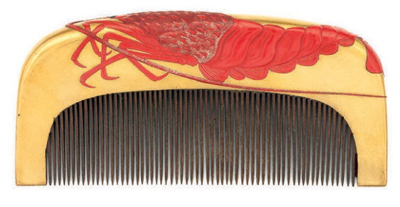Early Edo: This wooden comb is 17th-Century Edo. You can tell by the size, artistic style, and subject. It’s one idea on a large comb canvas is a chimera behind a folding screen.
From the Nomura Shojiro Collection comes this middle-era Edo comb, which depicts a grasshopper busily eating while a larger animal looms. But are we seeing the animal’s horn, while his hungry eyes focus on that grasshopper? Or, does the line signify the larger animal’s tail, as he plods away completely unaware of the grasshopper’s existence. Japanese comb art plays with and mixes perspectives a lot, but this maki-e painting has all the players in one scene. The artist makes you imagine how each animal sees their world. In art school, teachers ask students, “What can you do with a line?” And I think this comb provides a wonderful answer because with one line, it goes from being beautiful to being great.
Late Edo: Here, a crayfish is folded over the comb, a Meiji characteristic. On the front, you only see half of it. Also the space for the picture is getting smaller, and the edges are getting rounder. So we have one foot in Meiji. But it is still one idea on a comb, which is Edo. Japan is moving from one emperor to another, as an artist draws a crayfish.


I would like to buy hair comb if you sell it please let me know. I will pleased I love to buy
These combs are in museums. I am not a comb dealer, just a writer. Thank you for your inquiry.